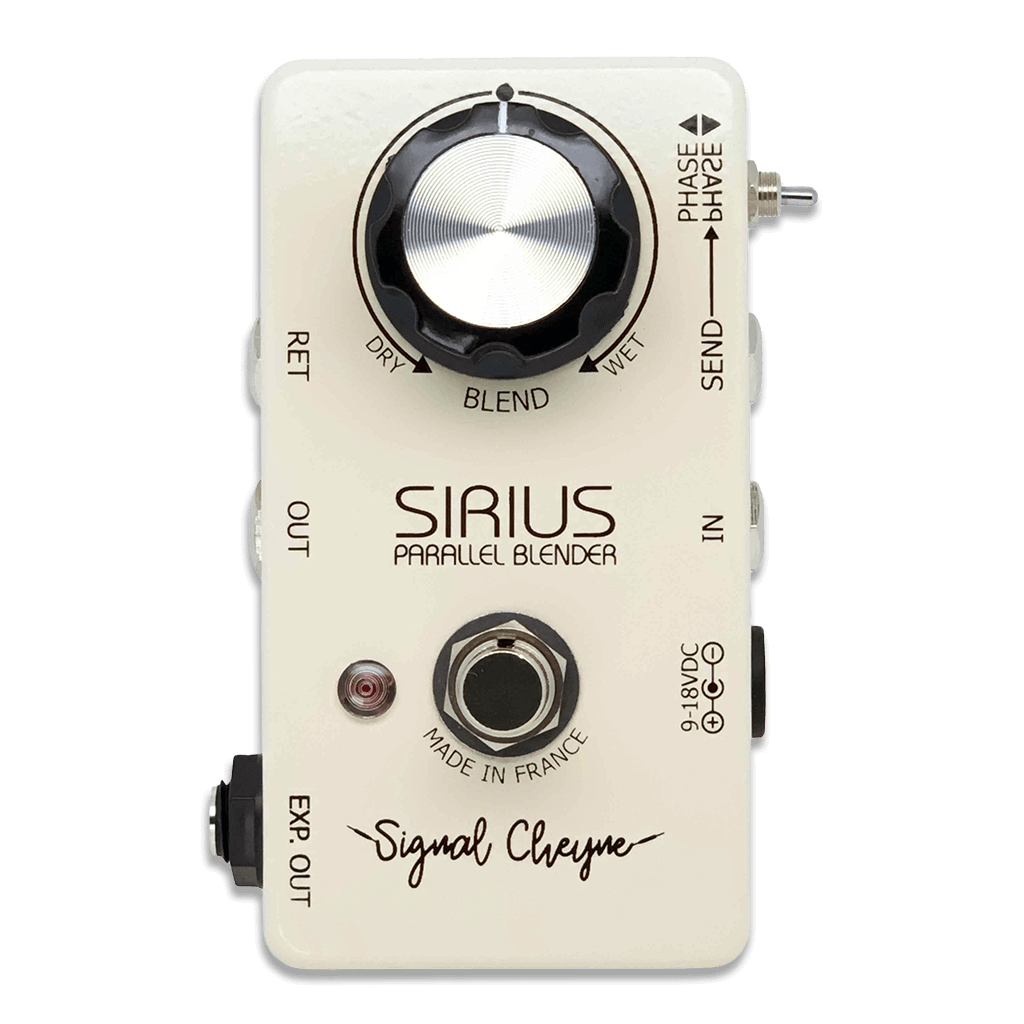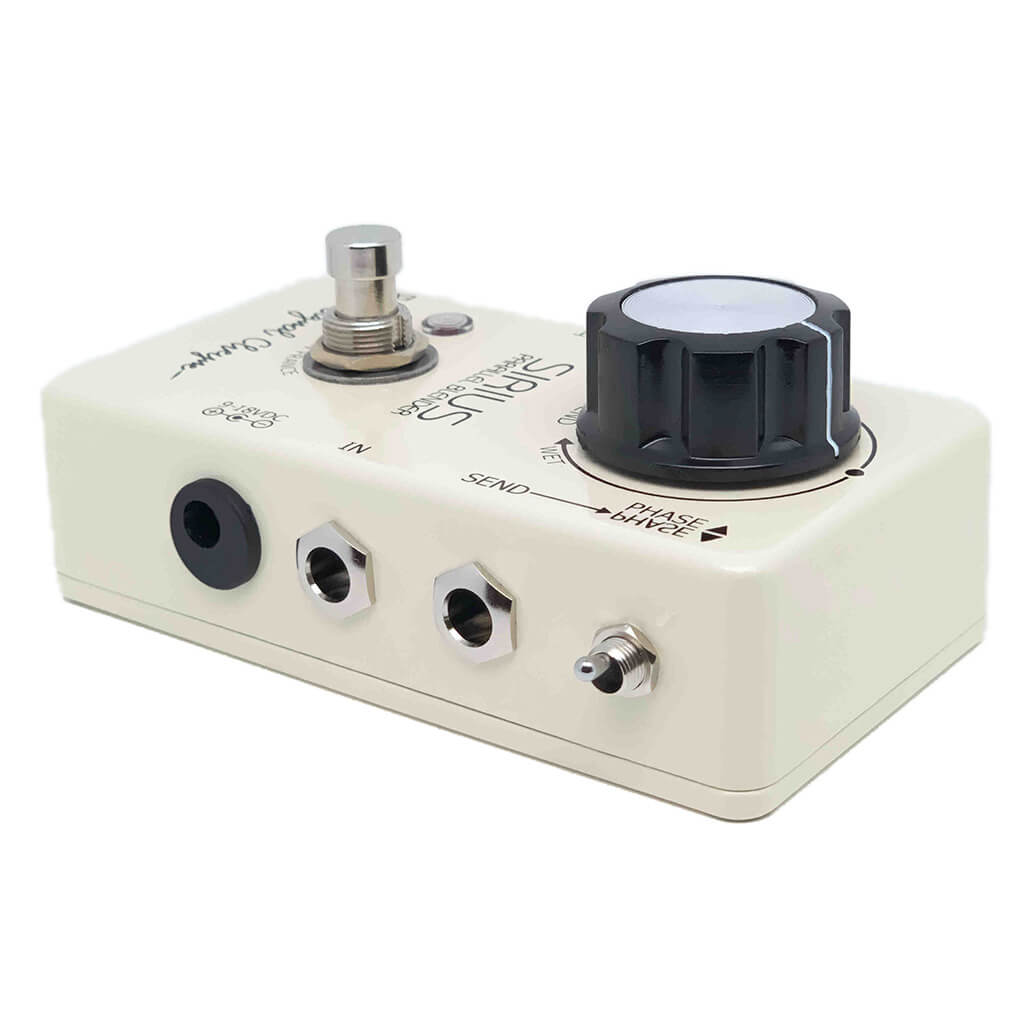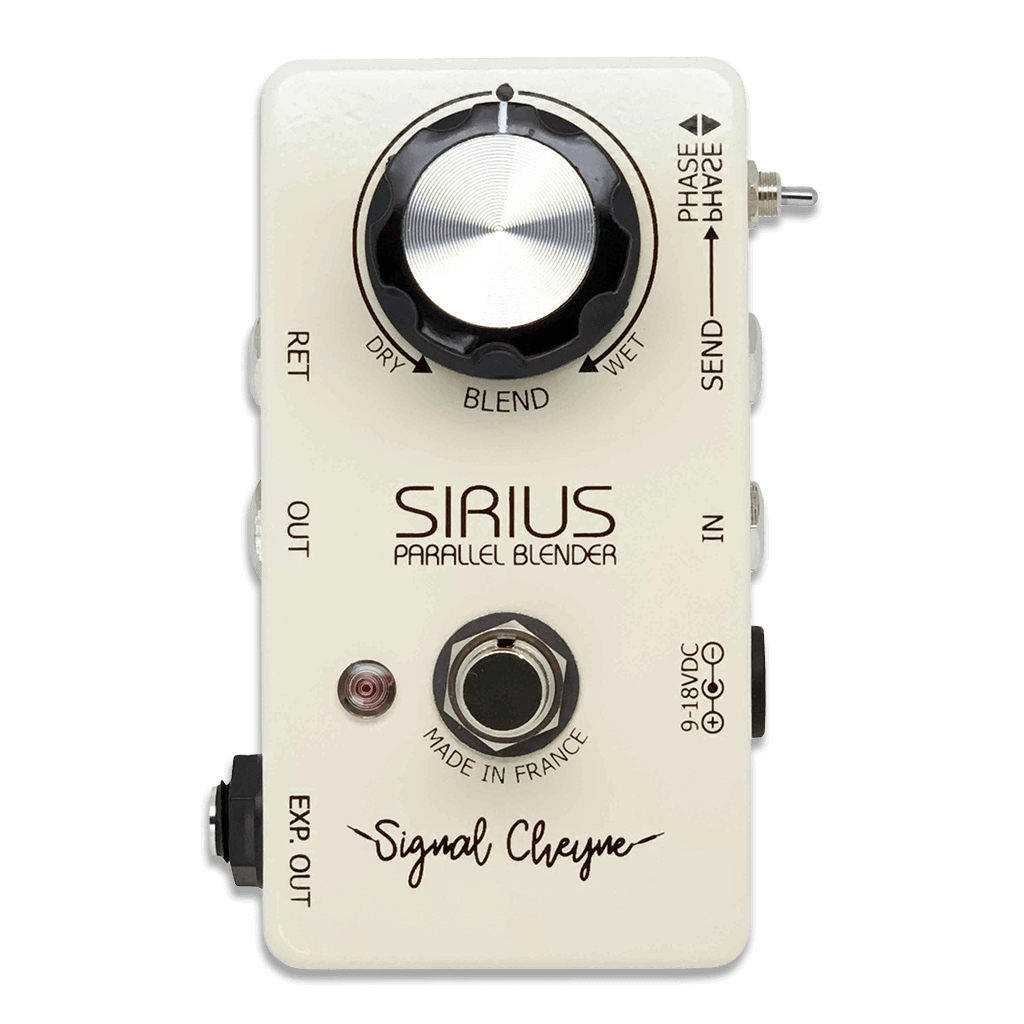

SIGNAL CHEYNE Sirius Parallel Blender V3
Versatile Signal Router
Deliveries
SHIPPING TO THE USA – The Royal Mail has created a new PDDP (Postal Delivery Duties Paid) service, which will calculate exact costs at the moment we book your shipping. While we are happy to absorb some of the costs, if the cost of the pre-paid duty is significantly more than what you have paid when placing your order, we will be in touch to request the balance is covered by you.
If in doubt, get in touch and we can give you an accurate quote in advance.
Did you know?
We offer free 48-hour tracked UK delivery on all orders over £150! Order before 9pm for next-working-day dispatch.
We offer 30-day hassle-free returns so you can pick the item you want safe in the knowledge that if it's not for you, we'll take it back and refund your order.
International deliveries are subject to additional import duties and VAT at your local rate. These charges are payable to the courier at time of delivery. Calculate how much you will need to pay here.
Please note that some orders may take longer to be processed before shipping during the busiest periods of the year.
Returns policy
Customers hold the right to return a product for a full refund if I am notified within 30 days of delivery.
If a product is delivered in a defective or damaged condition, please contact me immediately with details of your order.
To be eligible for a return, the item must be in the same condition
that you received it. It must also be in the original packaging.
Please note, the cost of return delivery is to be paid by the customer. This will be reimbursed if the item is shown to be faulty.
To complete a return, I require a receipt or proof of purchase. Please do not send any items back to the manufacturer, and please do not send any items to me without contacting me first.
Once I have confirmed that I will process your return, please send the item to:
Boost Guitar Pedals (returns)
84 Wolf Lane
Windsor
Berkshire
SL4 4YZ
United Kingdom
Replacements and refunds
My first course of action for faulty items is to replace them like-for-like. If this is not possible, a full refund will be considered as an alternative.
If returned within the 30-day period, your refund will be processed and a credit will be applied to your credit card or original method of payment.
Shipping
The customer is responsible for paying return shipping costs. Shipping costs are non-refundable unless a product is proven to be damaged or faulty upon delivery.
It is recommended that items should be returned using a trackable shipping service in case the item goes missing en route.
About the SIGNAL CHEYNE Sirius Parallel Blender V3
The Signal Cheyne Sirius Parallel Blender V3 is the unsung hero of your gigging rig!
Handmade in France, the Sirius Parallel Blender takes your signal and splits it in two, allowing you to keep your pristine dry signal while sending the wet signal through an effects loop. Use the loop to modulate, distort, delay - whatever you want - before it re-emerges.
The Sirius Parallel Blender V3 can also be used as an A/B channel switcher, an active Y-splitter, a volume pedal or a summer.
One awesome feature that shouldn't be overlooked is that you can use an expression pedal to control the Blend, making on-the-fly adjustments really simple and giving you full control over your sound during a gig. The Sirius Parallel Blender V3 is compatible with expression pedals that use 10K linear (B10k) pots.
Sirius Parallel Blender V3 Settings
The Phase toggle allows you to invert the phase of the loop, ensuring all pedals will play nicely by avoiding phase cancellation issues.
Active Y Splitter
To use the Sirius Parallel Blender V3 as an active Y splitter to run two amps simultaneously without any signal loss, plug the Output into Amp A and Send into Amp B. Set the Blend to 100% dry. If the amps are out of phase, you can use the Phase toggle.
A/B Switcher
Plug the Output into Amp A and Send into Amp B. Set the Blend to 100% wet. If the amps are out of phase, you can use the Phase toggle. Turning the pedal on and off switches between the two amps.
Volume Pedal
To use the Sirius Parallel Blender V3 as a volume pedal, don't plug anything into the Return jack and turn the pedal on. Use the Blend knob to adjust volume level.
Summer
Plug instrument 1 into Input and instrument 2 into Return. Set the Blend knob at 50%. Both signals will be summed into a mono out. This method can also sum stereo signals.
What's new in V3?
- The third version of the Sirius Parallel Blender includes several improvements over its earlier versions:
- There is no more bleed-through when setting the Blend knob to fully wet.
- ESD protection was added to make the pedal more robust.
- Current draw is lower.
- There’s now a constant output impedance of 100Ω, wherever the Blend knob is set and there’s no longer a drop in volume when the Blend knob is 50/50.
- You can now use 10k expression pedals instead of 100k.
Sirius Parallel Blender Demo
Sirius Parallel Blender V3 Features
- Parallel signal blender
- Also works as an A/B channel switcher, an active Y-splitter, a volume pedal and a summer.
- Handmade in France
- Internal voice trimmer
- Dimensions: 11.3 x 7.1 x 4.8cm
- Power: 9-18V centre-negative (not included)
- Current Draw: Max 8mA at 9V, 8.5mA at 18V





